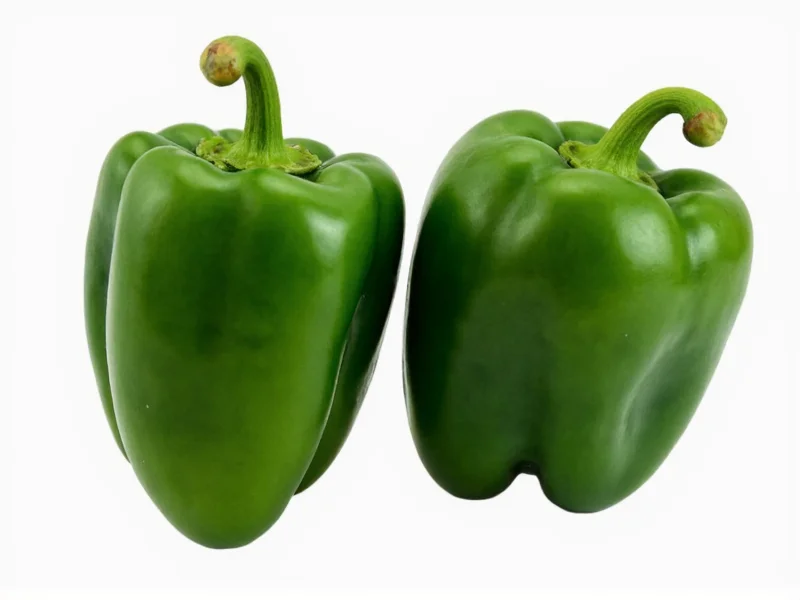Understanding the difference between poblano and pasilla peppers is essential for authentic Mexican cooking. Many home cooks confuse these peppers, leading to disappointing results in traditional dishes. Let's clarify these common chili pepper varieties with precise, practical information you can use immediately in your kitchen.
Physical Characteristics: Visual Identification Guide
Identifying these peppers correctly starts with understanding their appearance at various stages. The confusion often arises because "pasilla" refers to a dried pepper, while "poblano" typically describes the fresh form.
| Characteristic | Poblano Pepper | Pasilla Pepper |
|---|---|---|
| Botanical Name | Capsicum annuum 'Poblano' | Dried Capsicum annuum 'Chilaca' |
| Shape | Large, heart-shaped, triangular | Long, narrow, wrinkled, tapering |
| Size | 3-6 inches long, 2-3 inches wide | 6-8 inches long, 1-1.5 inches wide |
| Color (Fresh) | Dark green (turns red when mature) | N/A (sold only dried) |
| Color (Dried) | Brownish-black (then called 'ancho') | Dark brown to black |
| Texture | Thick, meaty walls | Thin, papery, deeply wrinkled |
Flavor Profiles and Heat Levels
When exploring the poblano vs pasilla heat level comparison, you'll find both are considered mild to medium heat, but their flavor profiles differ significantly.
Poblanos offer a rich, earthy flavor with subtle fruitiness when fresh. They measure 1,000-2,000 Scoville Heat Units (SHU), making them milder than jalapeños. As they ripen to red, their sweetness increases. When dried, poblanos become anchos, developing deeper, raisin-like notes.
Pasillas provide a more complex flavor profile—smoky, berry-like with notes of cocoa and coffee. Despite being slightly higher on the Scoville scale (1,000-2,500 SHU), their heat feels different due to the drying process. The drying concentrates flavors while changing the heat perception.
Culinary Applications: When to Use Each Pepper
Understanding the culinary uses for poblano and pasilla prevents recipe failures. These peppers serve different purposes in Mexican cuisine:
Poblano peppers shine when:
- Prepared fresh as stuffed peppers (chiles rellenos)
- Added to salsas and salads for mild heat
- Roasted and peeled for strips (rajas)
- Dried and ground for mole sauces (as anchos)
Pasilla peppers excel when:
- Used as a base for complex moles (particularly mole negro)
- Creating adobo sauces and marinades
- Adding depth to soups and stews
- Used in dried form for spice blends
Many cooks wonder can I substitute pasilla for poblano in recipes. The answer depends on whether you're working with fresh or dried forms. Fresh poblanos cannot substitute for dried pasillas one-to-one due to moisture content differences. If substituting:
- For fresh poblano: Use green bell pepper + pinch of cayenne for mild recipes
- For dried pasilla: Combine ancho and mulato peppers (1:1 ratio) as the closest approximation
- Never substitute fresh peppers for dried in equal quantities—dried peppers are concentrated
Availability and Substitution Guidance
Finding the right pepper can be challenging depending on your location. Understanding identifying poblano and pasilla peppers at the grocery store prevents mistakes.
Poblano availability: Widely available fresh in most supermarkets, especially in regions with significant Mexican populations. Look for firm, dark green peppers without wrinkles or soft spots. When dried, they're labeled "ancho" peppers.
Pasilla availability: Typically found only in dried form in the international or spice section. Be careful—some markets incorrectly label mulato peppers as pasillas. True pasillas are long, thin, and very dark brown.
If you're searching for poblano pepper substitute when unavailable, consider:
- Fresh poblanos: Anaheim peppers (milder) or cubanelle (even milder)
- Dried anchos: Guajillo peppers (brighter, fruitier) or New Mexico chiles
- Dried pasillas: As mentioned, a blend of ancho and mulato provides closest flavor match
Common Misconceptions Clarified
The differences between fresh poblano and pasilla peppers often cause confusion due to naming inconsistencies:
- Misconception: Pasilla is just a dried poblano
Reality: Pasilla comes from chilaca peppers; dried poblanos are called anchos - Misconception: These peppers can be used interchangeably
Reality: Their moisture content and flavor profiles make direct substitution problematic - Misconception: Heat level is the primary difference
Reality: Flavor complexity and culinary function matter more than slight SHU differences
Many grocery stores compound this confusion by mislabeling peppers. Always check the botanical name or physical characteristics rather than relying solely on labels when possible.
Growing Considerations for Home Gardeners
If you're interested in growing your own, understanding the growing requirements for poblano and pasilla peppers helps:
- Poblanos: Require 65-80 days to maturity, prefer warm temperatures, need consistent moisture
- Chilacas (which become pasillas): Take 80-100 days to mature, more tolerant of variable conditions
- Both need full sun and well-draining soil with pH 6.0-7.0
- Poblanos are typically harvested green; chilacas are left to ripen fully before drying
Remember that pasilla peppers aren't a separate plant variety—they're specifically the dried form of mature chilaca peppers. Calling a fresh chilaca a "pasilla" is technically incorrect.











 浙公网安备
33010002000092号
浙公网安备
33010002000092号 浙B2-20120091-4
浙B2-20120091-4